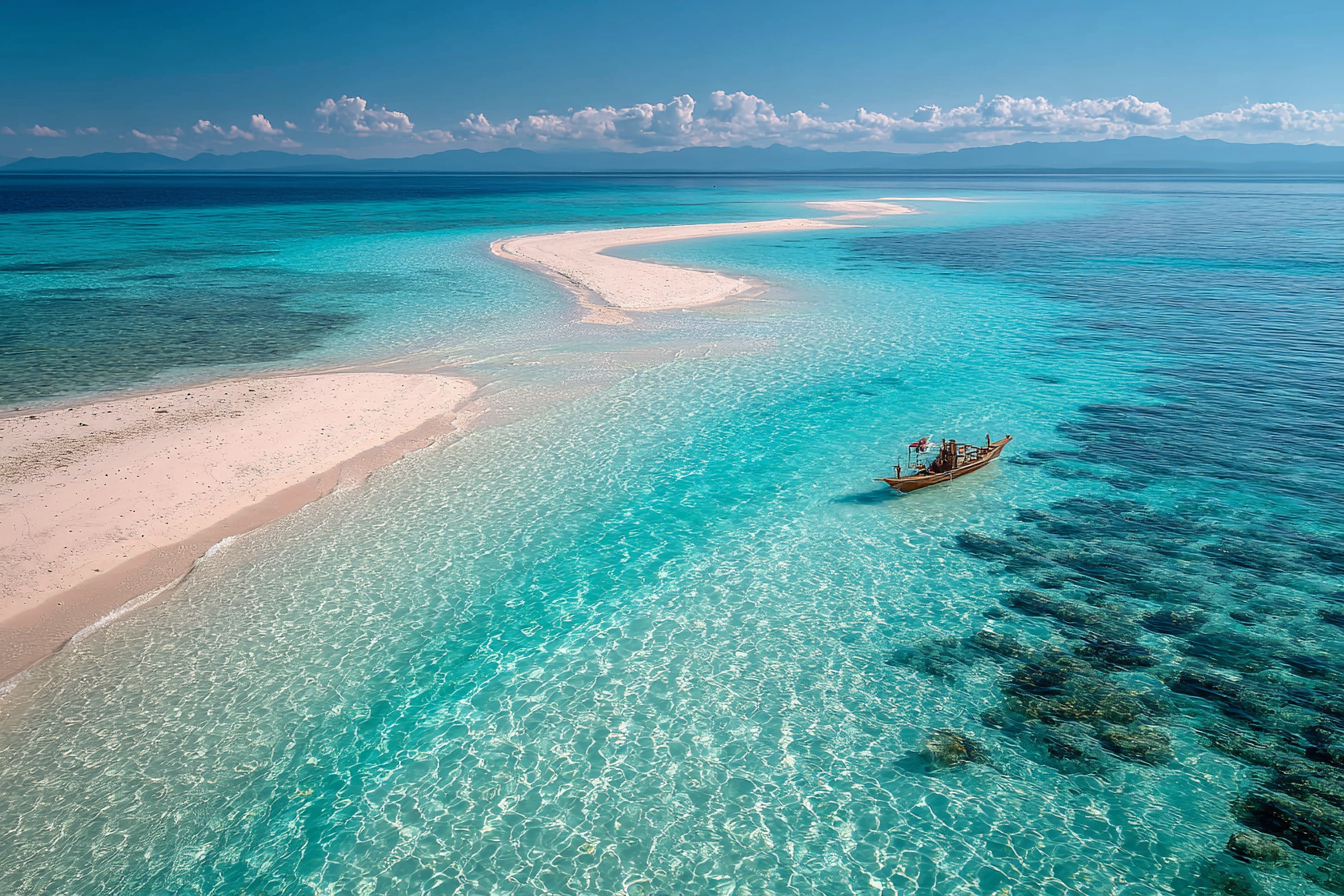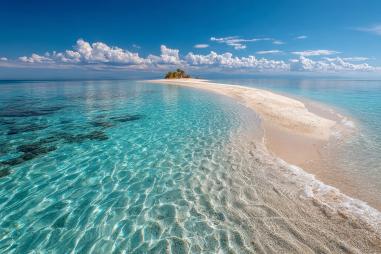Kalanggaman Island, a gem in the Philippines’ Visayan Sea, is renowned for its pristine white beaches and awe-inspiring sandbars that stretch into the turquoise waters. This small but stunning island offers a peaceful escape from the hustle and bustle, where visitors can immerse themselves in nature’s beauty, soak up the sun, and explore some of the most picturesque coastal formations in the region. If you’re considering a visit, get ready to discover the captivating beaches and sandbars that make Kalanggaman Island truly unforgettable.
A Closer Look at Kalanggaman Island’s Beaches and Sandbars
Kalanggaman Island is a long, narrow strip of land surrounded by crystal-clear waters, which provides visitors with several immaculate beaches and remarkable sandbars that change shape with the tides. The island’s beaches are known for their powdery white sand, fine and soft beneath your feet, creating a perfect setting for relaxation and beach activities. Unlike more commercialized destinations, Kalanggaman retains a natural, almost untouched feel, with minimal development and very few amenities, helping preserve the island’s serene atmosphere.
The beaches are framed by vibrant blue waters that gradually deepen, making them ideal for swimming and snorkeling. However, what truly sets Kalanggaman apart are its sandbars, which extend dramatically into the sea, creating natural walkways and offering panoramic views of the surrounding ocean. These sandbars vary in length and width, with some stretching for hundreds of meters and others appearing as isolated white patches amid the sea, especially visible during low tide.
Highlights of the Main Sandbar Formations
Kalanggaman Island boasts two main sandbars, often described as its signature features. The most famous is the long, narrow sandbar stretching from the southeastern end of the island. This sandbar looks like a white ribbon delicately floating on the blue sea, a favorite spot for visitors to take photos, walk barefoot, and witness the contrast between the sand and the water. Its length allows ample space for people to spread towels, enjoy picnic lunches, and watch the stunning sunrises or sunsets.
The second notable sandbar is on the northwestern side of the island. This sandbar is shorter but equally picturesque, offering a more secluded experience for those looking to escape the small crowds. Both sandbars change shape and size depending on the tides, with the best time to visit being midday during low tide when the sandbars are at their most expansive and accessible.
Best Spots for Swimming and Sunbathing
For swimming enthusiasts, the beach areas on the eastern side of Kalanggaman provide calm and refreshing waters, protected from strong currents and waves. The shallow waters here warm up nicely under the sun, making it suitable even for kids and those who prefer leisurely swims. The clarity of the water also encourages snorkeling around the edges of the island, where you can observe colorful marine life and coral formations.
Sunbathing is a delight on both the main island and the sandbars. The soft sands invite visitors to lounge under the sun or set up umbrellas for a relaxing day. The expansive sandbar at the southeastern end of the island is perfect for those who want to sunbathe in a more open setting, surrounded by endless ocean views. You’ll often find visitors here stargazing and enjoying the tranquil sounds of the sea in the early mornings or late evenings.
Wildlife and Nature Observations
Kalanggaman Island isn’t just about beaches and sandbars – it’s also a haven for wildlife and nature lovers. Birdwatchers may spot various seabirds gliding over the waters or resting along the shoreline. The island’s unspoiled environment supports a variety of marine creatures, including sea turtles, which sometimes come close to the shores, particularly during nesting seasons.
Snorkeling around the island reveals vibrant coral reefs inhabited by numerous species of fish, starfish, and other fascinating sea life. Observing this underwater ecosystem highlights the importance of preserving Kalanggaman’s natural beauty. Beyond the water, the island’s vegetation is sparse but includes coastal plants that help stabilize the sand and protect the shoreline from erosion.
Timing Visits for Low Tide and High Tide Effects
Understanding the tides is crucial to making the most of your trip to Kalanggaman Island’s beaches and sandbars. At low tide, the sandbars expand significantly, offering a larger area for exploration, walking, and sunbathing. This is when the sandbars are most prominent and visually stunning, creating wide, white pathways stretching into the sea.
During high tide, the sandbars appear much narrower or even partly submerged, which changes the island’s landscape dramatically. High tide is often a great time for swimming since the water is deeper and currents tend to be gentler closer to the shore. It’s also a wonderful moment to appreciate the island from a different perspective, with the sandbars looking like tiny islands surrounded by a vast sea.
Checking local tide charts or consulting with guides is recommended to plan your activities accordingly. Many visitors enjoy timing their visits to coincide with both tides to experience the contrasting aspects of the island’s natural features.
Photography Opportunities on Kalanggaman Island
Kalanggaman Island is a photographer’s dream, offering breathtaking landscapes and unique natural elements that are perfect for capturing memorable shots. The contrasting colors of white sand, azure water, and deep blue skies create a vibrant palette that looks stunning in photographs. Early morning and late afternoon light enhances the beauty of the sandbars, producing soft shadows and warm hues that add depth to images.
Drone photography is particularly popular here, giving an aerial view of the island’s ribbon-like sandbars snaking through the ocean. Whether you’re an amateur or a professional photographer, the island provides endless opportunities to capture nature at its finest, from close-up shots of marine life and delicate sea shells to sweeping panoramic images of the island’s coastline.
Preservation Tips for Beach Lovers
As tempting as it is to explore and enjoy Kalanggaman’s stunning beaches and sandbars, it’s important to remember that the island’s natural beauty depends on responsible tourism. Here are some essential tips for preserving the environment:
- Avoid littering and always bring back any trash or waste you generate.
- Use reef-safe sunscreen to protect marine life from harmful chemicals.
- Refrain from touching or stepping on coral reefs and marine creatures to avoid damage.
- Limit the use of plastic and bring reusable containers and bags.
- Respect local rules and guidelines designed to preserve the island’s ecosystem.
- Support sustainable tourism operators who prioritize conservation.
By following these simple guidelines, visitors can help maintain Kalanggaman Island’s beaches and sandbars for future generations to enjoy.
Immersing Yourself in the Island’s Sandy Wonders
Exploring Kalanggaman Island’s beaches and sandbars is truly a journey into one of the Philippines’ most beautiful coastal destinations. Whether you’re wandering along the extensive sandbars, basking in the sun, snorkeling in clear waters, or simply marveling at the peaceful surroundings, the island promises a genuinely rejuvenating experience. Its untouched charm combined with spectacular natural formations offers an ideal getaway for those seeking tranquility and scenic beauty.
With a mindful approach to preserving its environment, Kalanggaman Island remains a shining example of nature’s bounty—a place where you can reconnect with the sea, sand, and sky in perfect harmony. So pack your sunscreen, bring your camera, and prepare to be enchanted by the sandy wonders that await you on this remarkable island.







